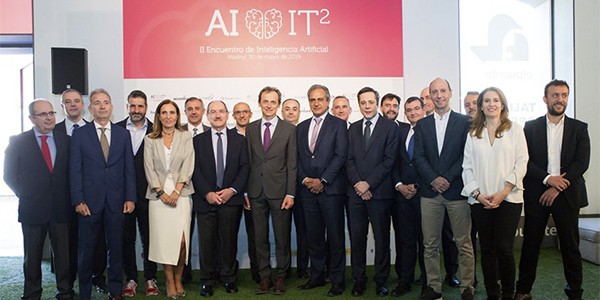Artificial intelligence and digital twinning boost the optimization of productive processes

The President of the Spanish Association of Electronics, Digital Contents and ICT Companies (Asociación de Empresas de Electrónica, Tecnologías de la Información, Telecomunicaciones y Contenidos Digitales: AMETIC), Pedro Mier, gave the opening address of the 2nd artificial intelligence encounter, stating that “artificial intelligence is the great transformation lever for reindustrialization of new businesses”, opening up a huge range of possibilities for boosting our companies’ productivity and competitiveness. Taking his cue from these opening words, Spain’s Minister of Science, Innovation and Universities, Pedro Duque, argued that “artificial intelligence is one of the disciplines destined to change Spain’s production model the most” and “will help to make Spain more resilient to the rollercoaster ride of the world economy”. Nonetheless, the minister then added that we cannot lose sight of the ethics of its use and the quality of the jobs created.
The encounter also presented practical cases showing the development of artificial intelligence in diverse sectors. The Artificial Intelligence and Big Data Manager of GMV’s Secure e-Solutions sector, José Carlos Baquero, presented “Digital twinning and artificial intelligence: a perfect match for Industry 4.0” as an example of how artificial intelligence can help to boost the optimization of productive processes. During his intervention he gave a demo with a virtual representation of the workings of a thermosolar plant, showing how the fine control of the temperature stored in the central tanks can be substantially improved with the right combination of digital twinning and artificial intelligence.
In industry the main use of artificial intelligence is to help monitor, optimize and control the behavior of its operations and systems to improve efficiency and boost performance. With the additional help of digital twinning it becomes possible to simulate fault modes for predictive maintenance, create new operation policies, conduct in-plant experiments at lower risk and automate and control industrial processes. “In-plant changes always imply a certain amount of risk and are difficult to bring in; digital twinning makes it possible to use simulation-based models or models obtained from data”, wound up Baquero.